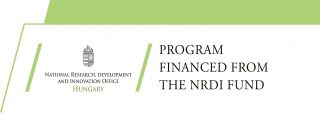Total budget: 2.000.000 HUF
Project manager: Dr. Balázs Berlinger
Duration:
from 1st January 2023. to 31st december 2023.
Summary:
A series of elements, especially transition metals and their role in adverse health effects of particles have been in the focus of interest for ambient particulates. The health effects resulting from the deposition of particulate matter (PM) in the respiratory tract depend on the dose received, the site of deposition and the body’s response to the deposited particles. One important goal of aerosol measurements should therefore be to ascertain the effective dose of PM delivered to the lungs.
In this co-operative project together with the University of Graz, size resolved urban aerosol samples will be analysed with high-performance coupled elemental analysis techniques. To gain useful information on concentration levels of different elements (mostly metals) and some of their species in urban aerosol size fractions; elements, as well as some arsenic species will be determined in the PM size fractions. For sample collection, stationary cascade impactors will be applied. For total element determination, samples will be digested in a microwave digestion system. For the determination of organoarsenicals, namely trimethylarsine oxide, dimethylarsinate, methylarsonate, and total inorganic arsenic as arsenate a combined extraction and oxidation technique will be used. An Agilent 8900 ICPMS/MS will be applied for the determination of total element concentrations. An HPLC system will be coupled to the ICPMS/MS for the arsenic speciation analysis.
As a result of the joint project, information on elemental concentration levels and the distribution of these elements between different urban aerosol size fractions will be available. The information on the distribution of elements (and their species) will allow to have a better estimate of the dose of elements, which possibly deposit in the human airways after being exposed to urban air. Furthermore, regarding arsenic speciation analysis, we hope that the obtained data from all locations, but especially from Oslo will give new insights into the topic of arsenic biovolatilization.

